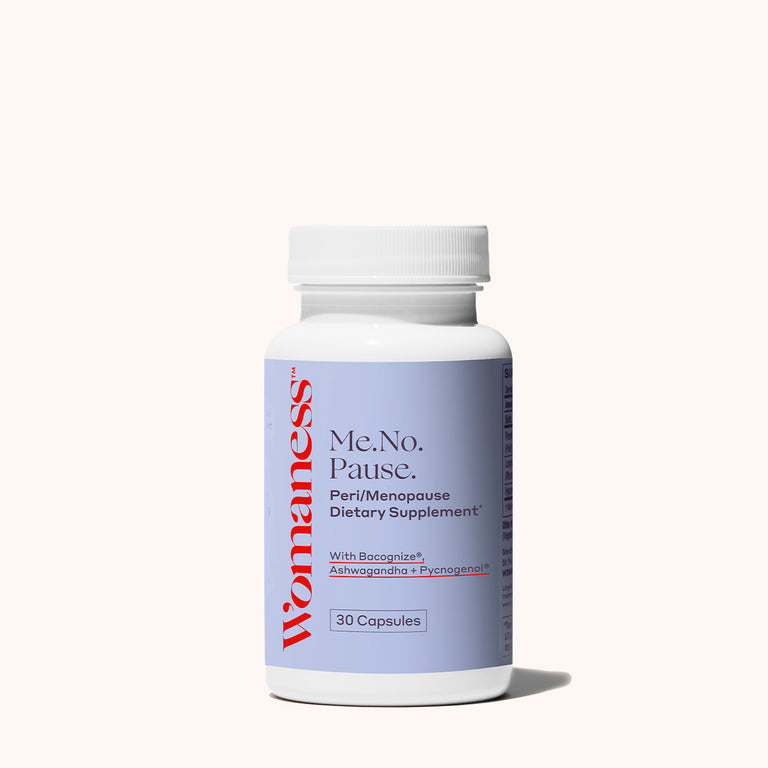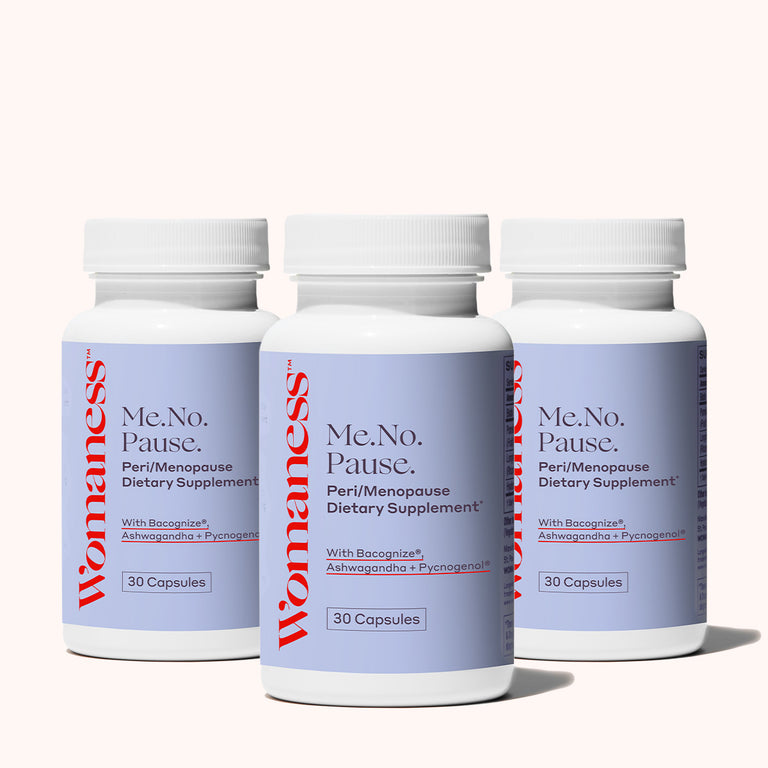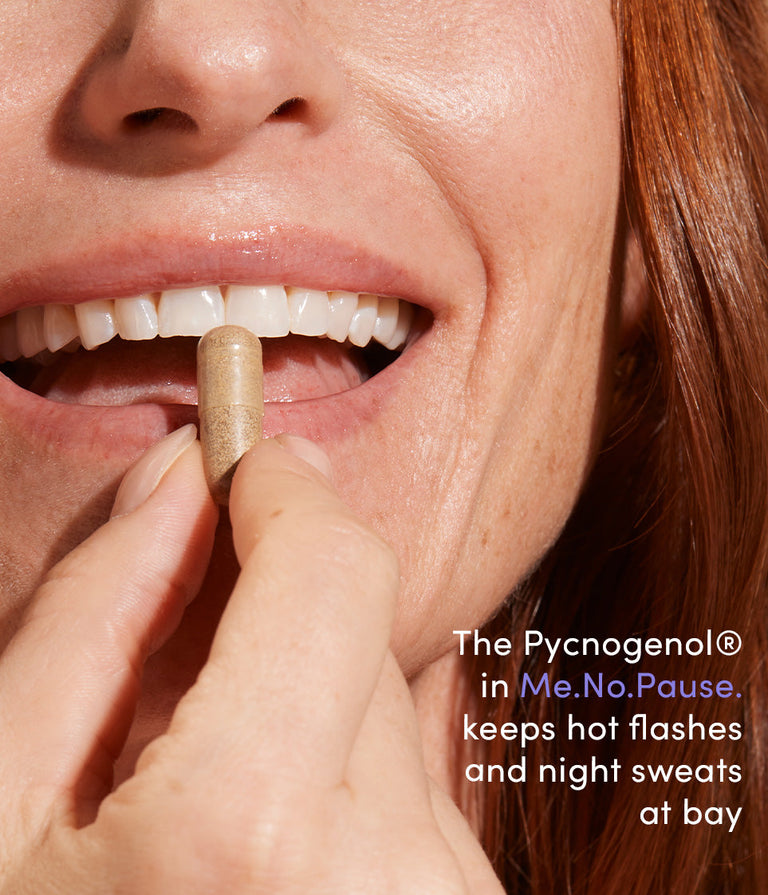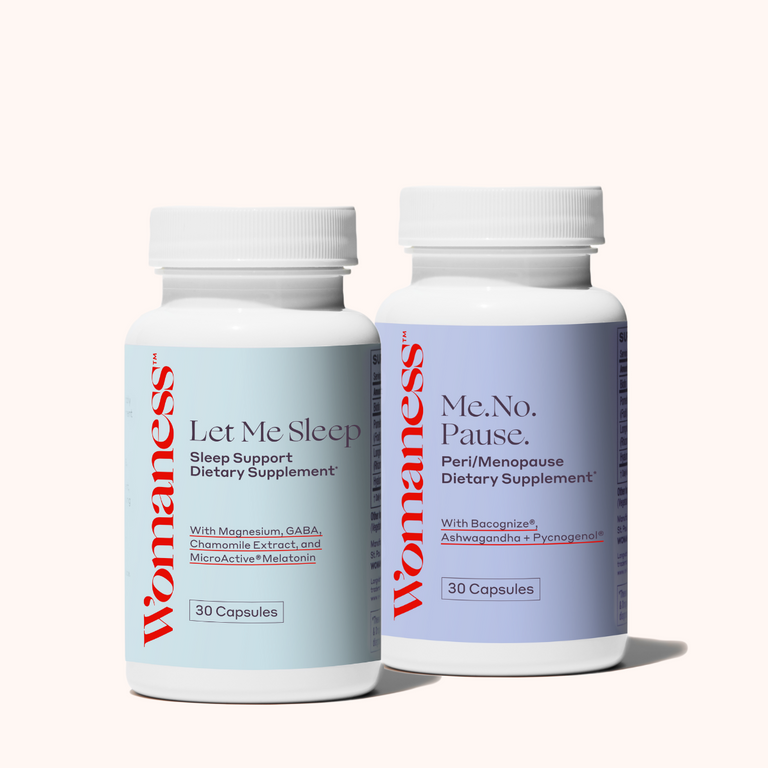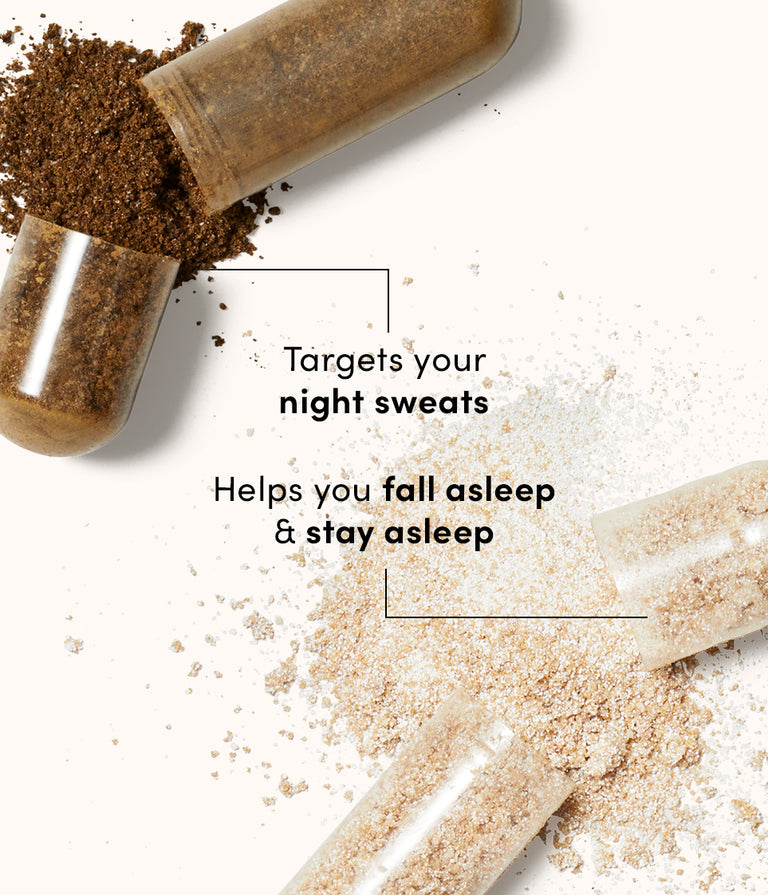By Womaness Editors 4-Minute Read

One of the most common and infamous symptoms of perimenopause and menopause, hot flashes are the butt of many a joke, tweet, or meme, but for anyone experiencing the bursts of uncontrollable heat, there’s little to laugh about. So what exactly is going on in our bodies? And more importantly, are there ways to lessen or stop the sweat, redness, and “get me out of this hellfire” that is hot flashes? Read on to learn the ways to cool out.
What Exactly Is a Hot Flash?
It is the sudden feeling of warmth in the upper body. It tends to be most intense on the face, neck, and chest. This makes it hard to hide at a dinner party or morning meeting. Skin tends to redden, as if you are blushing, but it is often accompanied by profuse sweating. If you lose too much body heat, you ironically feel a bothersome chill afterward. Other symptoms can include a rapid heartbeat and a feeling of anxiety. Night sweats are hot flashes that occur, well, at night, often disrupting your sleep. (Good times.)
So, What’s Happening Here?
While there is no definitive answer to exactly how hormonal changes cause hot flashes, dipping estrogen levels are the primary culprit. Research suggests that these intense heat periods occur when estrogen levels cause the hypothalamus (your body’s thermostat) to become extra sensitive to slight fluctuations in body temperature. When it thinks your body is getting warm, it kicks in to help cool you down. There are other factors that can contribute to hot flashes and night sweats. They include medication side effects, thyroid issues, and certain cancer treatments.
 We recommend the Me.No.Pause. for doctor-approved support for hot flashes
We recommend the Me.No.Pause. for doctor-approved support for hot flashes
Am I Hot Or Am I Having a Hot Flash?
While a steamy summer afternoon or a stuffy elevator can start the flushed, perspiration train for anyone, there is a distinct profile to a hot flash. Here are the five most common giveaways.
1. Warm Spell:
Women typically feel the sensation first in the middle of the chest before quickly spreading to the face, arms, and legs. The severity can range from slight to five-alarm fire. This is when you want to stick your head in a freezer asap.
2. Full Flush:
Often your cheeks or face are the first giveaway that a hot flash has arrived. The redness typically spreads to your entire face, neck, chest, and even ears. This is caused by blood rushing to the surface of the skin: the body’s reaction to a sudden rise in temperature.
3. All Aflutter:
Unlike the feeling you got standing near your high-school crush, a rapid heartbeat during a hot flash can make you feel weak and you can experience shortness of breath. Any prolonged heart palpitations or chest pain can be a sign of something more serious and should be treated by your medical professional.
4. Sweating It Out:
Perspiration is the sign of a healthy body functioning properly as we exert ourselves through exercise or strenuous daily activities. As your body rises in temperature, it tries to regulate by releasing fluid through the sweat glands. A hot flash however can bring uncomfortable and smelly perspiration unexpectedly, the typical hot spots are your upper lip, back of your neck, underarms, lower back, chest, and forehead.
5. Cold As Ice:
Chills often come directly after a hot flash, much like you experience when you are suffering from a fever. Again, this is your body trying to regulate your internal thermostat. Often these chills come at 3 AM as a charming side effect of night sweats.
Other less common symptoms include tingling fingers, headache, rush of blood to your head, and headaches or dizziness. These should be discussed with your doctor immediately.
How Can I Prevent or Minimize Hot Flashes?
There are simple lifestyle changes that may help dampen the fiery feeling. Doctors recommend dressing in layers so you can remove clothing when you start to feel hot. Steering clear of certain foods such as hot and spicy dishes as well as caffeinated beverages and alcohol can also help. Women with a healthy weight often report less severe flashes than women who are on the higher end of the scale. Keeping cooling sprays stashed in your bag or on your nightstand can be smart. And a mindfulness practice such as meditation or deep breathing have helped many find relief from hot flashes or better manage the severity of them.
Medical interventions such as hormone therapy or certain medications can be prescribed by a healthcare provider if you experience frequent or severe hot flashes. It's crucial to consult with your physician to determine your best approach.

Are There Supplements That Can Help With Hot Flashes?
Yes, dietary supplements can offer support for hot flashes for some women. Plant-based ingredients like Pycnogenol®, black cohosh, and red clover have been studied for their potential effects on hot flashes, with Pycnogenol in particular being one of the most widely researched.
Pycnogenol, derived from a maritime pine bark extract from southwestern France, has been cited in scientific journals for improving the symptoms of menopause, including hot flashes. Remember to always do your research and seek out a clean supplement free from animal-derived ingredients, parabens, phthalates, sulfates, artificial colors, formaldehyde, and mineral oils. Our recommendation? Me.No.Pause. by Womaness, a doctor-approved, hormone-free supplement with clinically studied ingredients formulated to address the unique challenges of menopause, including hot flashes, thanks to its inclusion of Pycnogenol. Learn more here.
And as with any treatment, it's essential to talk with your healthcare provider before taking on your hot flashes.
SAVE 10%! Results improve over time with Me.No.Pause. supplements: Take consistently for at least 90 days to begin seeing your best results. Start with a 3-Month Supply of Me.No.Pause now. SHOP HERE
More For You
What's Happening Here? Vaginal Dryness
How to Manage (and Even Prevent) Night Sweats
Ingredient Spotlight: Maritime Bark Extract

